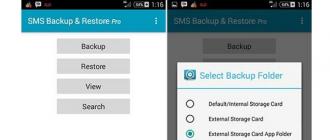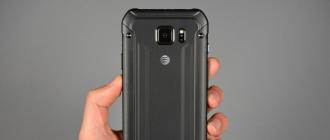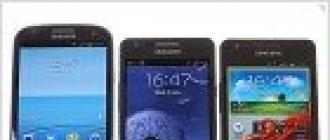Information about the brand, model and alternative names of a specific device, if any.
Design
Information about the dimensions and weight of the device, presented in different units of measurement. Materials used, offered colors, certificates.
| Width Width information - refers to the horizontal side of the device in its standard orientation during use. | 67 mm (millimeters) 6.7 cm (centimeters) 0.22 ft (feet) 2.64 in (inches) |
| Height Height information - refers to the vertical side of the device in its standard orientation during use. | 134 mm (millimeters) 13.4 cm (centimeters) 0.44 ft (feet) 5.28 in (inches) |
| Thickness Information about the thickness of the device in different units. | 10.25 mm (millimeters) 1.03 cm (centimeters) 0.03 ft (feet) 0.4 in (inches) |
| Weight Information about the weight of the device in different units of measurement. | 145 g (grams) 0.32 lbs (pounds) 5.11 oz (ounces) |
| Volume The approximate volume of the device, based on the dimensions provided by the manufacturer. Refers to devices with a rectangular parallelepiped shape. | 92.02 cm³ (cubic centimeters) 5.59 in³ (cubic inches) |
| Colors Information about the colors in which this unit is offered for sale. | The black Yellow Red Green Blue |
| Materials for making the body Materials used to make the device body. | Plastic |
SIM card
A SIM card is used in mobile devices to store data that certifies the authenticity of mobile service subscribers.
Mobile networks
A mobile network is a radio system that allows multiple mobile devices to communicate with each other.
Mobile technology and data rates
Communication between devices in mobile networks is carried out using technologies that provide different data rates.
Operating system
The operating system is the system software that controls and coordinates the operation of the hardware components in the device.
SoC (System on a Chip)
A system on a chip (SoC) integrates all of the major hardware components of a mobile device into a single chip.
| SoC (System on a Chip) A system on a chip (SoC) integrates various hardware components such as a processor, graphics processor, memory, peripherals, interfaces, etc., as well as the software required for their operation. | MediaTek MT6572 |
| Technological process Information about the technological process by which the chip is manufactured. The value in nanometers is half the distance between the elements in the processor. | 28 nm (nanometers) |
| Processor (CPU) The main function of the processor (CPU) of a mobile device is to interpret and execute instructions contained in software applications. | ARM Cortex-A7 |
| Processor size The capacity (bits) of the processor is determined by the size (in bits) of registers, address buses and buses for data. 64-bit processors offer better performance than 32-bit processors, which, in turn, are more powerful than 16-bit processors. | 32 bit |
| Instruction set architecture Instructions are commands with which the software sets / controls the processor. Information about the instruction set (ISA) that the processor can execute. | ARMv7 |
| Level 1 cache (L1) The cache memory is used by the processor to reduce the time it takes to access more frequently used data and instructions. L1 (Level 1) cache is small and is much faster than both system memory and other levels of cache. If the processor does not find the requested data in L1, it continues to look for it in the L2 cache. On some processors, this search is performed simultaneously in L1 and L2. | 32 KB + 32 KB (kilobytes) |
| L2 cache L2 (level 2) cache is slower than L1, but instead has a larger capacity, allowing more data to be cached. It, like L1, is much faster than system memory (RAM). If the processor does not find the requested data in L2, it continues to look for it in L3 cache memory (if available) or in RAM memory. | 256 KB (kilobytes) 0.25 MB (megabytes) |
| The number of processor cores The processor core executes program instructions. There are processors with one, two or more cores. Having more cores increases performance by allowing multiple instructions to execute in parallel. | 2 |
| CPU clock speed The clock speed of a processor describes its speed in cycles per second. It is measured in megahertz (MHz) or gigahertz (GHz). | 1200 MHz (megahertz) |
| Graphics processing unit (GPU) A graphics processing unit (GPU) handles computation for a variety of 2D / 3D graphics applications. In mobile devices, it is most commonly used by games, consumer interfaces, video applications, and more. | ARM Mali-400 MP1 |
| Number of GPU cores Like a processor, a GPU is made up of several working parts called cores. They handle the graphical computing of various applications. | 1 |
| GPU clock speed Speed \u200b\u200bis the clock speed of the GPU and is measured in megahertz (MHz) or gigahertz (GHz). | 500 MHz (megahertz) |
| The amount of random access memory (RAM) Random access memory (RAM) is used by the operating system and all installed applications. The data that is saved in RAM is lost after the device is turned off or restarted. | 512 MB (megabytes) |
| Memory type (RAM) Information about the type of random access memory (RAM) used by the device. | LPDDR2 |
| RAM frequency The frequency of the RAM determines its speed of operation, more specifically, the speed of reading / writing data. | 266 MHz (megahertz) |
Built-in memory
Each mobile device has built-in (non-removable) fixed memory.
Memory cards
Memory cards are used in mobile devices to increase the storage space for data.
Screen
The screen of a mobile device is characterized by its technology, resolution, pixel density, diagonal length, color depth, etc.
| Type / technology One of the main characteristics of the screen is the technology by which it is made and on which the image quality of information directly depends. | TFT |
| Diagonal On mobile devices, screen size is expressed in terms of the length of its diagonal, measured in inches. | 4.5 in (inches) 114.3 mm (millimeters) 11.43 cm (centimeters) |
| Width Approximate screen width | 2.2 in (inches) 56 mm (millimeters) 5.6 cm (centimeters) |
| Height Approximate screen height | 3.92 in (inches) 99.64 mm (millimeters) 9.96 cm (centimeters) |
| Aspect ratio The aspect ratio of the long side of the screen to its short side | 1.779:1 |
| Resolution Screen resolution indicates the number of pixels horizontally and vertically on the screen. Higher resolution means sharper image detail. | 480 x 854 pixels |
| Pixel density Information about the number of pixels per centimeter or inch of the screen. Higher density allows information to be shown on the screen in clearer detail. | 218 ppi (pixels per inch) 85 ppcm (pixels per centimeter) |
| Color depth Screen color depth reflects the total number of bits used for color components in one pixel. Information about the maximum number of colors the screen can display. | 24 bit 16777216 flowers |
| Screen area The approximate percentage of the display area on the front of the device. | 62.35% (percent) |
| Other characteristics Information about other functions and features of the screen. | Capacitive Multitouch |
Sensors
Different sensors perform different quantitative measurements and convert physical metrics into signals that the mobile device recognizes.
Main camera
The main camera of a mobile device is usually located on the back of the body and is used for taking photos and videos.
| Flash type The most common types of flashes in mobile devices are LED and Xenon flashes. LED flashes give softer light and, unlike brighter xenon ones, are also used for video shooting. | LED |
| Image Resolution One of the main characteristics of mobile device cameras is their resolution, which shows the number of pixels horizontally and vertically in an image. | 2592 x 1944 pixels 5.04 MP (megapixels) |
| Video Resolution Information about the maximum supported resolution for video recording by the device. | 1280 x 720 pixels 0.92 MP (megapixels) |
| Specifications Information about other software and hardware features associated with the main camera to improve its functionality. | Autofocus Burst shooting Digital zoom Geographic tags Panoramic shooting HDR shooting Touch focus Adjusting the white balance ISO setting Exposure compensation Self-timer Scene selection mode |
Additional camera
Additional cameras are usually mounted above the screen of the device and are used mainly for video calls, gesture recognition, etc.
Audio
Information about the type of speakers and audio technology supported by the device.
Radio
The radio of the mobile device is a built-in FM receiver.
Locating
Information about the navigation and positioning technologies supported by the device.
Wi-Fi
Wi-Fi is a technology that enables wireless communication for transferring data over short distances between various devices.
Bluetooth
Bluetooth is a standard for secure wireless transfer of data between different types of devices over short distances.
USB
USB (Universal Serial Bus) is an industry standard that allows different electronic devices to exchange data.
Headphone jack
This is an audio connector, which is also called an audio connector. The most widely used standard in mobile devices is the 3.5mm headphone jack.
Connecting devices
Information about other important connection technologies supported by the device.
Browser
A web browser is a software application for accessing and viewing information on the Internet.
Video file formats / codecs
Mobile devices support different video file formats and codecs, which respectively store and encode / decode digital video data.
Battery
Mobile device batteries differ in their capacity and technology. They provide the electrical charge required for their function.
| Capacity The capacity of a battery indicates the maximum charge it can store, measured in milliampere-hours. | 1500 mAh (milliampere-hours) |
| A type The type of battery is determined by its structure and, more precisely, by the chemicals used. There are different types of batteries, with the most common mobile devices using lithium-ion and lithium-ion polymer batteries. | Li-Ion (Lithium-ion) |
| Talk time 2G 2G talk time is the period of time during which the battery charge is completely discharged during continuous 2G talk. | 15 h (hours) 900 min (minutes) 0.6 days |
| Standby time 2G Standby time in 2G is the period of time during which the battery charge is completely discharged when the device is in stand-by mode and connected to a 2G network. | 270 h (hours) 16200 min (minutes) 11.3 days |
| Talk time 3G Talk time in 3G is the period of time during which the battery charge is completely discharged during a continuous conversation on a 3G network. | 15 h (hours) 900 min (minutes) 0.6 days |
| 3G standby time 3G standby time is the period of time during which the battery is fully discharged when the device is in stand-by mode and connected to a 3G network. | 270 h (hours) 16200 min (minutes) 11.3 days |
| Specifications Information about some additional characteristics of the device battery. | Removable |
The MultiPhone 5450 DUO combines sophisticated design with outstanding performance. The powerful 1.2GHz processor makes loading apps incredibly fast, so you can see your email, instant messaging windows and social networking apps on the screen at the same time. The smooth operation and perfect balance of the MultiPhone 5450 DUO will surely delight every user.
MAIN TECHNICAL CHARACTERISTICS
Food
Battery capacity: 1500 mAh Battery type: Li-IonAdditional Information
Package contents: smartphone, USB cable, charger, headphones, 4 colored back panelsGeneral characteristics
Type: smartphone Weight: 145 g Control: touch buttons Case material: plastic Operating system: Android 4.2 Case type: classic Number of SIM cards: 2 Mode of operation of multiple SIM cards: alternate Dimensions (WxHxT): 67x134x10.25 mmScreen
Screen type: color, 16.78 million colors, touch Type of touch screen: multitouch, capacitive Diagonal: 4.5 inches. Image size: 854x480 Pixels per inch (PPI): 218Multimedia capabilities
Camera: 5 million pixels, built-in flash Camera functions: autofocus Video recording: yes Front camera: yes, 0.3 million pixels. Audio: MP3 Headphone jack: 3.5mmCommunication
Interfaces: Wi-Fi, Bluetooth, USB Standard: GSM 900/1800/1900, 3G Satellite navigation: GPSMemory and processor
Processor: 1200 MHz Number of processor cores: 2 Internal memory: 4 GB RAM: 512 MB Memory card slot: yesOther functions
Controls: voice dialing, voice control Sensors: proximity Airplane mode: yes Touch screen: Touch displays are of two types: resistive and capacitive.Resistive displays consist of two transparent plates that make electrical contact with each other at the point of pressure. Such displays react to mechanical force by means of any object. Devices equipped with such displays are equipped with special sticks - stylus, which are convenient to control the device.
The disadvantage of such a display is the high susceptibility of the screen to scratches and abrasions; when using your fingers, you need to make an effort to react the device.
The second type of touchscreen displays - capacitive, are devoid of these drawbacks, tk. were originally developed for direct control of fingers, without the use of any third-party items and tools.
In each corner of the display are electrodes that apply the same alternating voltage to the conductive layer of the display. When touched with a finger or other object capable of conducting current and having its own electrical capacity, a current leakage appears. The closer the touch point is to the electrode, the lower the electrical resistance of the display and, accordingly, the greater the current.
Devices with such displays respond exclusively to hand control, touching the surface of other objects, due to the lack of their own electrical capacity, will not lead to the closure of the "contact point - electrode" circuit, will not have any effect on the device. If customizable, such a display can be configured not even to touch with a finger, but only to bring it to the surface.
The indisputable advantage of such displays is their very high resistance to mechanical damage, in view of the possibility of using sufficiently thick and durable surface glasses.
Another advantage is the very high accuracy in determining the coordinates of the touch, down to one pixel. When controlling the hand, of course, such accuracy turns out to be unclaimed, but when using special conductive stylus it opens up great potential opportunities.
Capacitive displays are more transparent (about 90%) than resistive displays, the transparency of which does not exceed 85%, which makes it possible to display a higher quality image on their surface.
The physical resource of capacitive displays is at least 200 million clicks, which approximately corresponds to 6.5 years of clicks with an interval of 1 second. Surface contamination with non-conductive substances does not affect their performance.
The relative disadvantages of capacitive touch displays are the need to use large displays in mobile devices, due to the need to provide comfortable hand control and a higher cost compared to resistive ones.
General characteristics
A type
Determining the type of device (phone or smartphone?) Is quite simple. If you need a simple and inexpensive device for calls and SMS, it is recommended to opt for a telephone. A smartphone is more expensive, but it offers a wide variety of options: games, video, Internet, thousands of programs for all occasions. However, its battery life is significantly shorter than that of a simple phone.
smartphone operating system Android OS version at the start of sales Android 4.2 Body type classic Body material plastic Office touch buttons Number of SIM-cards 2 Mode of operation of multiple SIM-cards variable Weight 145 g Dimensions (WxHxT) 67x134x10.25 mmScreen
Screen type color, 16.78 million colors, touch Touch screen type multitouch, capacitive Diagonal 4.5 inches. Image size 854x480 Pixels Per Inch (PPI) 218 Aspect ratio 16:9Multimedia capabilities
Number of main (rear) cameras 1 Main (rear) camera resolution 5 MP Rear flash Main (rear) camera functions autofocus Video recording there is Front-camera yes, 0.3 MP Audio MP3 Headphone jack 3.5 mmCommunication
GSM 900/1800/1900, 3G standard Interfaces
Almost all modern smartphones have Wi-Fi and USB interfaces. Bluetooth and IRDA are less common. Wi-Fi is used to connect to the internet. USB is used to connect the phone to a computer. Many phones also have Bluetooth. It is used to connect wireless headphones, to connect the phone to wireless speakers, and to transfer files. A smartphone equipped with an IRDA interface can be used as a universal remote control.
Wi-Fi, Bluetooth, USB Satellite navigation
Built-in GPS and GLONASS modules allow you to determine the coordinates of the phone using signals from satellites. In the absence of GPS, a modern smartphone can determine its own location using signals from the base stations of a cellular operator. However, finding coordinates based on signals from satellites is usually much more accurate.
GPSMemory and processor
CPU
In modern phones and smartphones, special processors are usually used - SoC (System on Chip, system on a chip), which, in addition to the processor itself, houses the graphics core, memory controller, I / O device controller, etc. Therefore, the processor largely determines the set of functions and device performance.






